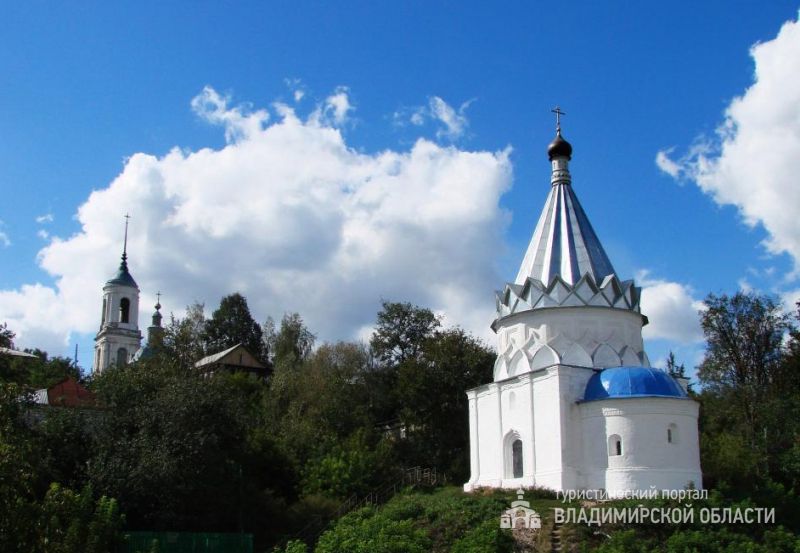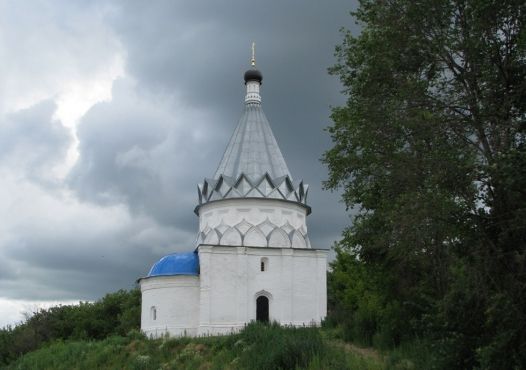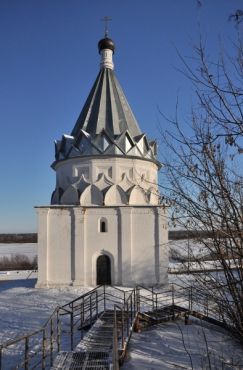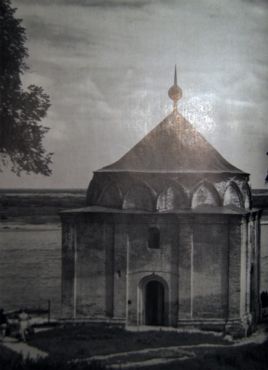Church of SS Kozma and Demyan
- Address:
- Murom, Embankment street (not far from N14 in Gubkin street)
- GPS:
- 55.57651509, 42.06593995
Near the bank of the Oka on a low hill stands one of the oldest temples preserved in Murom – the church of SS Kozma and Demyan (presumably 1541-1556). According to one legend, Cosmas and Damian are Romans who came to Russia and treated people for free, but out of envy were poisoned by a pagan enemy. For this they were canonized. In Russia they were the patrons of blacksmithing.
According to another legend, which became more widespread, in July 1552, on the site of the present church, the marquee of Ivan the Terrible was broken up, where he was considering the plan for taking Kazan. Two blacksmiths brothers Kozma and Demyan appeared to the tsar and volunteered to assist in crossing the army to the other bank of the Oka. Under the cover of night they entered the enemy camp, which was on the opposite shore, and set it on fire. Taking advantage of the turmoil, the army of Ivan the Terrible successfully crossed the river and smashed enemies. But the brave brothers perished and were ranked as saints. The temple, built after the capture of Kazan, was called in their honor the church of SS Kozma and Demyan. The tsar sent "from his bounty" five hundred rubles on its construction.
Like most of the buildings of the 16th century, the tented church of SS Kozma and Demyan is distinguished by its clear proportions and simplicity. It represents a low quadrangle square in plan. The semicircular protruding apse with three small windows almost hangs down from the hill and rests on a specially built for it podklet, which in olden days, apparently, served as a crypt. The quadrangle is separated from the apse by a blank wall. The altar was visible to the assembled in the temple through a small arch in the center of the wall. The space for the worshipers was very small and poorly lit by a single window in the west wall. The tent was deaf. Obviously, for better illumination in the 18th century in the southern wall of the temple a window was made. The interior was very modest.
The architectural significance of the church of SS Kozma and Demyan is precisely in the external decoration, simple but refined. Each wall is divided by rather wide pilasters into three parts. The doors are framed by perspective portals with keeled archivolts. The cornice is decorated with a ribbed belt. The most effective part was the tent. The basis for it was a deaf octagon, from which only the lower half is preserved to this day. It is decorated with an interweaving of sixteen ornamental keeled kokoshniks, which was unique for Russian architecture of that time.
In 1868, the tent of the church of SS Kozma and Demyan collapsed. But according to the surviving earlier drawings one can imagine its appearance. The tent of the church had the shape of a sixteen-pointed star in plan. At its base, at the border of the connection with the upper part of the octagon, the architects placed a series of grooves in the wall and a row of three-edged kokshniks.
The small church of SS Kozma and Demyan was the best creation of Moscow architects of the 16th century in Murom and occupies a place in the row of such famous tented temples as the Church of the Ascension in the village of Kolomenskoye and the St. Basil's Cathedral on the Red Square in Moscow. Therefore, many experts believe that, if not the famous masters Barma and Postnik built the church, then the architects who worked in their artel before the arrival in Murom.
In 1901, a low roof was erected over the remaining half ruins of the church. For decades, the church of Kozma and Demyan stood empty and unrestored. Only by 2010, work was carried out to restore the lost tent. On the surviving octagon was installed a wooden frame on which the tented completion was fixed. At present, the church of SS Kozma and Demyan is inoperative.
 Tourism portal of the
Tourism portal of the



